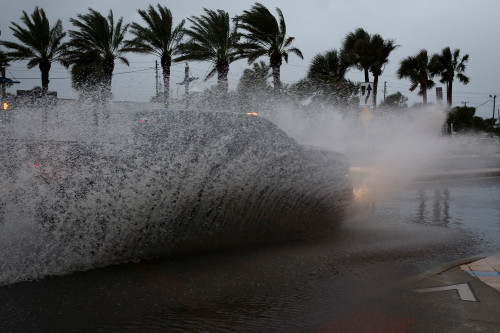By Erwin Seba
HOUSTON (Reuters) – U.S. government scientists forecast an above-normal 2025 hurricane season on Thursday, and said big staffing and budget cuts at the National Oceanic and Atmospheric Administration would not hinder its ability to forecast devastating storms and warn the public.
The Atlantic hurricane season begins on June 1 and is forecast to produce three to five major hurricanes with sustained winds of at least 111 miles (179 km) per hour, according to the U.S. National Weather Service, which is overseen by NOAA.
The weather service forecast 13 to 19 named tropical storms with winds of at least 39 mph, of which six to 10 are forecast to become hurricanes with winds of 74 mph or higher.
“Warmer sea surface temperatures are probably the major contributor to this,” NWS director Ken Graham said at a news conference.
Between 1991 and 2020, there were an average of 14.4 named tropical storms annually in the Atlantic, including on average 3.2 major hurricanes among 7.2 hurricanes.
Graham, along with officials from NOAA, said recent staff cuts made by the Trump administration’s Department of Government Efficiency, led by Elon Musk, would not hamper hurricane response.
Nearly 900 employees, more than 7%, of NOAA’s workforce have been cut, leading to protests across the United States.
“We had some folks go, but we’re going to make sure that we have everything that we have on the front lines. Every warning’s going to go out,” Graham said.
Critics of the cuts have raised concerns that the NWS would be unable to launch weather balloons and monitor local conditions ahead of storms that affect regions of the country involved in agriculture and energy production like the Midwest and U.S. Gulf Coast.
Graham said the U.S. National Hurricane Center in Miami is fully staffed and emphasized that the weather service does not rely on single methods like weather balloons in the upper atmosphere to forecast tropical storms.
He said the agency also uses data and photographs from satellites, ground observations and hurricane hunter aircraft, which fly through storms to create highly reliable models of their future progress.
“The hurricane hunters are also ready to go, both at NOAA and the Air Force. That information we get from the hurricane hunters is crucial to the hurricane forecast,” Graham said, adding that using those aircraft increased the accuracy of storm track and intensity forecasts by 10-20%.
No representatives of the Federal Emergency Management Agency were present at Thursday’s briefing. In the past, FEMA has participated in hurricane forecast briefings as a way to assure the public about the federal government’s hurricane preparedness.
FEMA did not immediately respond to a request for comment.
Deanne Criswell, a FEMA administrator under former President Joe Biden, said participating in the briefings was an important way to show partnership between agencies.
“It gave us an opportunity to talk about our readiness posture,” she said.
Academic and private weather forecasters have also issued forecasts for an above-normal hurricane season, which continues through November 30.
Colorado State University meteorologists said in early April the 2025 hurricane season across the Atlantic basin will be above average, with 17 named tropical storms, including nine hurricanes, of which four are predicted to be major.
In late March, AccuWeather called for between three and five major hurricanes out of seven to 10 hurricanes from 13 to 18 named tropical storms this year.
The 2024 hurricane season was one of the costliest on record. There were five major hurricanes, out of a total of 11 hurricanes from 18 named storms.
The deaths of 427 people were attributed to 2024’s storms and losses totaled $130 billion.
(Reporting by Erwin Seba in Houston, additional reporting by Nathan Layne, Valerie Volcovici; Editing by Nia Williams)





